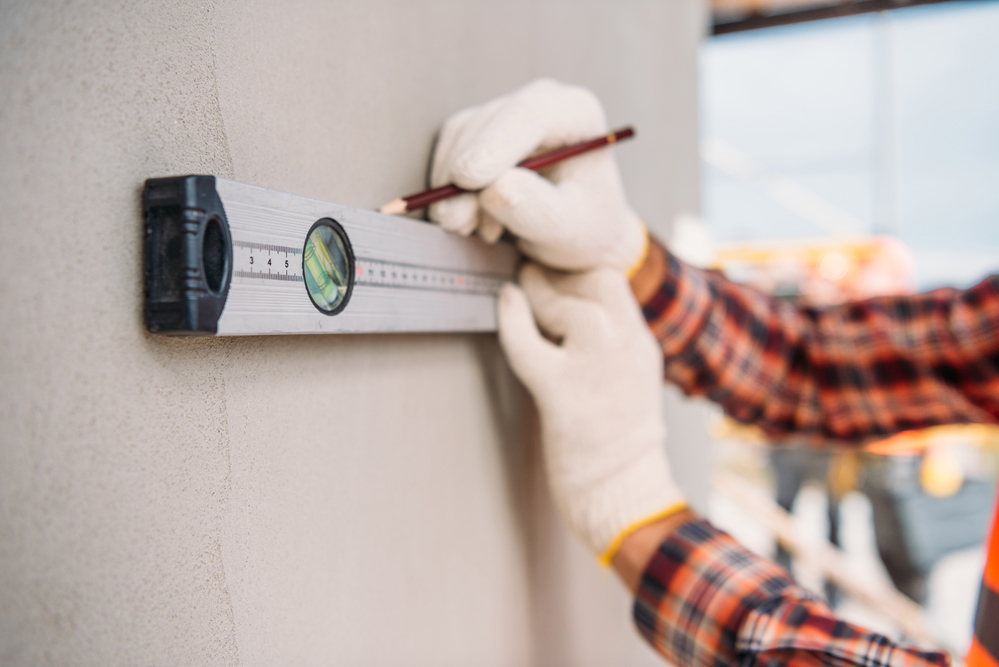


The structural works must be completed, before the plastering begins. Fitted windows, roofing, plumbing works. Electrical installations and distribution, water, gas, sewerage, etc. as well as wall heating must also be completed. It is also necessary to verify their functionality, whether by pressure or through flood test.

The plastering substrate should be dry. We therefore recommend measuring its dampness. We specifically recommend certified hygrometers for accurate measurement. It is better to take samples and to send them to an accredited laboratory in renovations and when dealing with damp masonry. You will find not only the exact masonry dampness, but also possible salting.
You can find out very easily about the substrate absorbability. Pour or spray water over the substrate. If the water drips down, the substrate is poorly absorbent. If the water absorbs too fast, the substrate is strongly absorbent. With balanced substrate absorbability, the water is absorbed evenly. Weak, strong or uneven absorption can be compensated by the penetration coatings.

The final levelness of the plaster is affected by the substrate. In order to avoid later disappointment, agree your pre-planarity requirements before plastering. The standard deviations of levelness for different classes are also determined by the standard. Different requirements are placed on cellars, others on living quarters or specially illuminated galleries. What is the maximum unevenness of the substrate for specific requirements can be found in STN EN 13914-2 standard or in the technological directive Baumit plasters.
Analyze the causes of dampness and perform remedial measures, drying of masonry or rather application of suitable remediation material.
Never leave the mold on the substrate. Treat them with a suitable antifungal fixture, e.g. Baumit FungoFluid and then mechanically remove it. Clean the substrate.
Dust and dirt can worsen the adhesion of the plaster to the substrate. Clean the dry dirt with a brush, broom or wash off with a stream of water. Allow the substrate to dry.
It is not sufficient to wash greasy substrate with clean water only. Use a suitable cleaning product, for example Baumit ReClean.
Removal of remnants of de-boarding products on concrete with hot steam or suitable cleaning products. After cleaning, let the substrate to dry.
Never underestimate cracks that work. Place the analysis and suggestions for redevelopment measures in the hands of an expert. After cracks stabilization, it is also necessary in some cases to make dilation in the plaster.
Parts that are getting lose or peel off need to be removed. Only if you ensure sufficient adhesion of the plaster to the substrate.